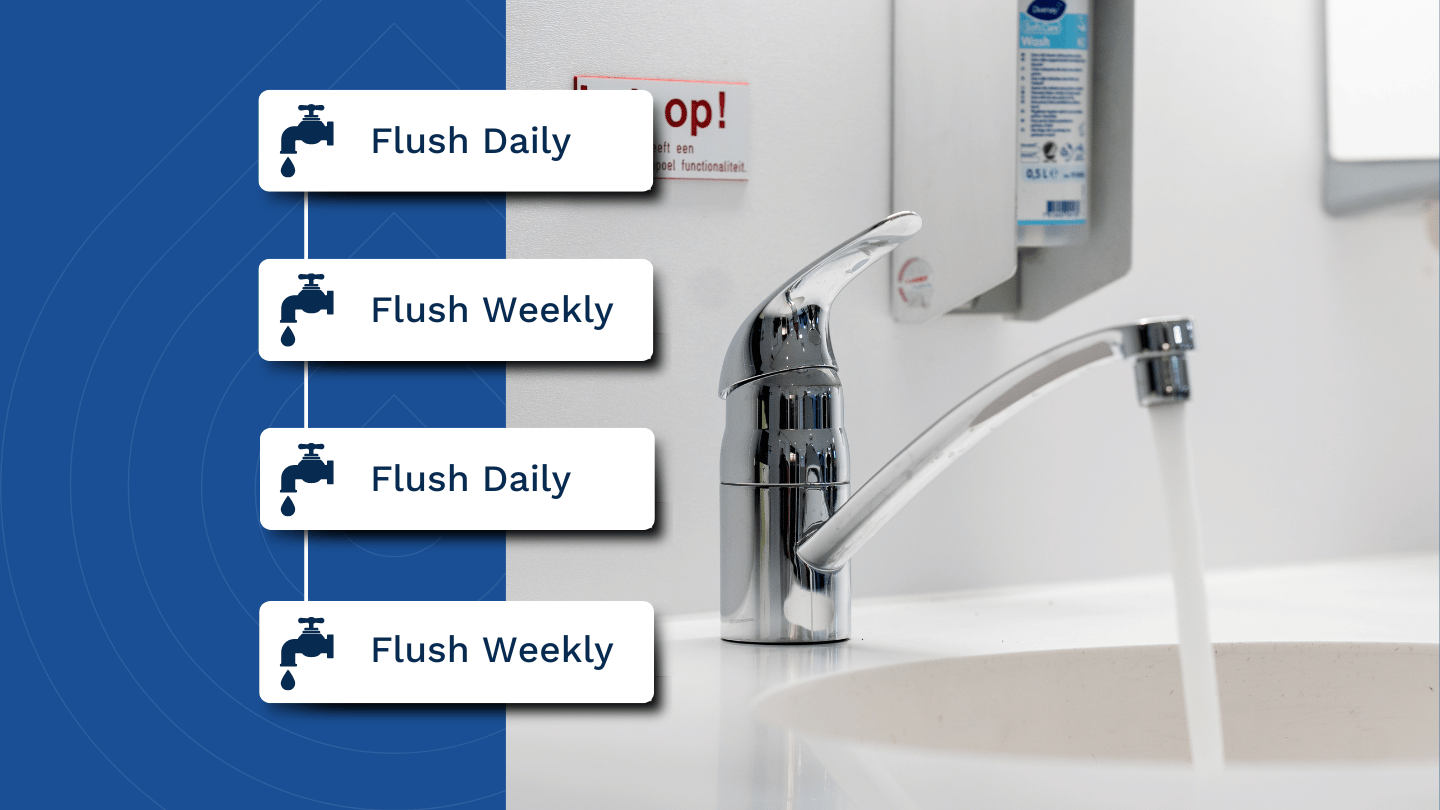The Critical Role of Flushing in Legionella Control
Let’s get one thing straight. Flushing for Legionella control is not optional. If you’re not flushing your water systems correctly and consistently, you’re creating a potential breeding ground for dangerous bacteria. And it’s not just a compliance issue—it’s a matter of health and safety.
But here’s where the real issue lies: a lot of people don’t fully understand why they need to flush, how to flush effectively, or how to measure their efforts.
So Let’s dig a little deeper!
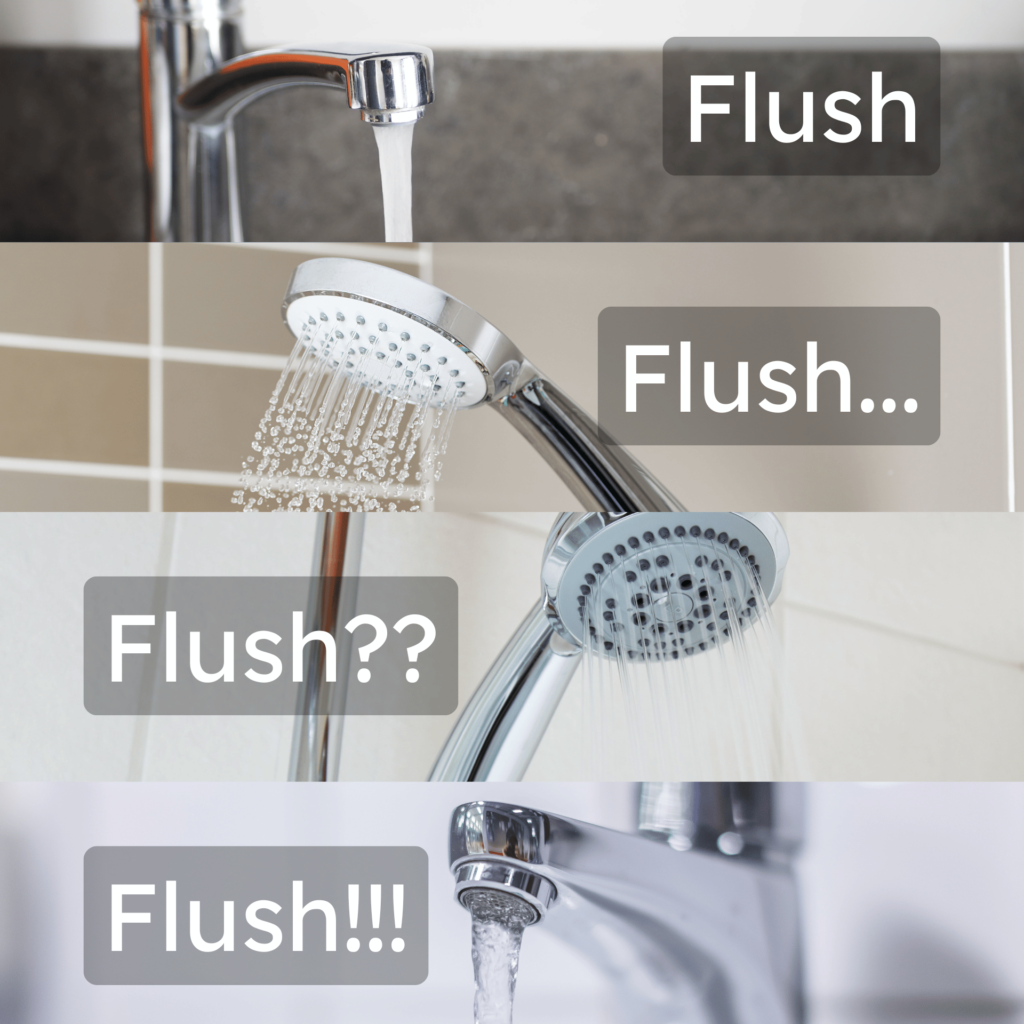
Table of contents
- Why Flushing for Legionella Control?
- Guidelines on Flushing: What the Experts Say
- How to Flush (And How to Do It Safely)
- How long to Run the Taps for Legionella Flushing?
- When and how often to Flush: The Trigger Points
- Keeping Records: Why It’s Non-Negotiable
Why Flushing for Legionella Control?
First of all, stop thinking of flushing as just a checkbox exercise. Flushing is your last line of defense against Legionella, and the reality is, it’s a bit more complex than just running taps for a few minutes.
You’re dealing with biofilm, temperature management, water stagnation, and all the factors that make Legionella a significant risk. If you’re not tackling these head-on, you’re not controlling the Legionella bacteria.
Flushing can help you manage Legionella control in different ways:
- Biofilm Control:
- Biofilm is your enemy. It’s a slime layer that forms inside pipes and provides the perfect environment for Legionella to thrive. If your flushing regime isn’t aggressive enough, you’re allowing this protective layer to grow and spread, which puts everyone at risk.
- Lower Legionella Concentration:
- Moving water means fewer Legionella in the pipes. It’s that simple. When water sits stagnant, bacteria multiply. By flushing your system, you’re diluting any bacteria present, reducing concentrations to safer levels.
- Prevent Stagnation:
- When water isn’t flowing, it’s sitting. And sitting water at temperatures between 20-45°C is a playground for Legionella. By flushing regularly, you’re ensuring that water isn’t left stagnant, thereby removing one of the key risk factors.
- Temperature Control:
- Temperature is everything when it comes to controlling Legionella. Cold water needs to be below 20°C, and hot water stored above 60°C and distributed above 50°C. Legionella flushing helps you maintain these critical temperature thresholds. If you’re not doing this, you’re inviting the bacteria to grow.
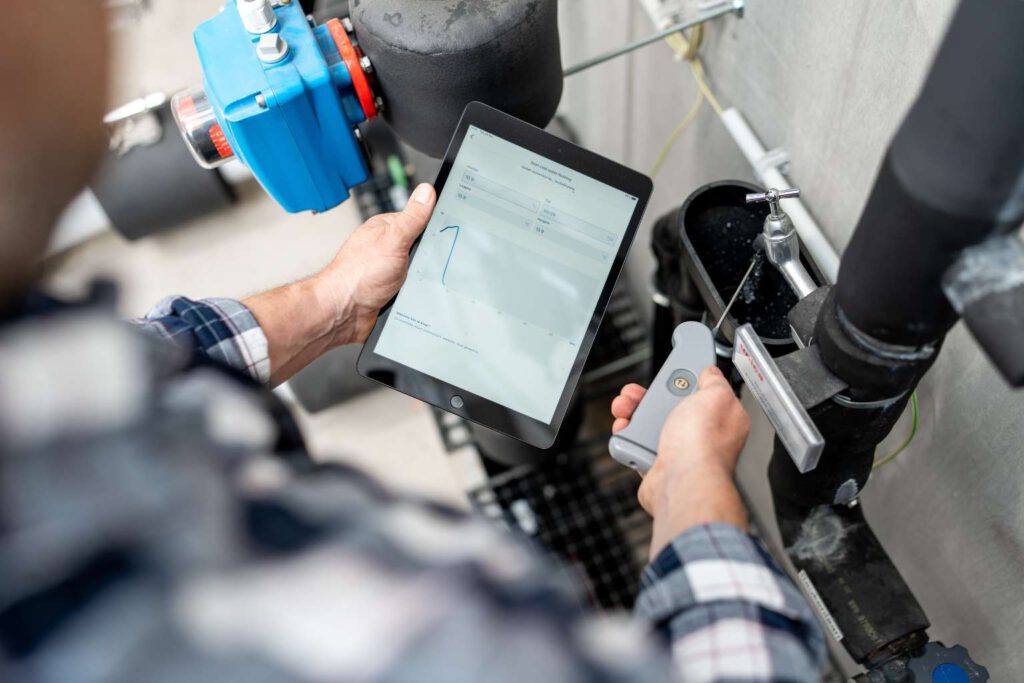
Guidelines on Flushing: What the Experts Say
Luckily we’re not in a guessing game here. There are clear guidelines laid out by the HSE (Health and Safety Executive), NHS, and other industry bodies on how and when you should be flushing your systems.
- HSE L8 ACOP:
- This is the bible for Legionella control in the UK. L8 ACOP states that any infrequently used outlets—like taps and showers—should be flushed at least once a week. Miss this, and you’re already out of compliance. But more importantly, you’re putting your entire system at risk.
- HSG274:
- HSG274 builds on L8, offering more granular guidance. For example, it emphasises that flushing should be carried out in healthcare settings daily or even multiple times a day. Are you mimicking normal use? If not, you’re already falling short.
- NHS Guidelines:
- The NHS takes things even further, particularly in high-risk areas like hospitals. Their guidelines often require a much more frequent Legionella flushing regime, sometimes multiple times per day. If you think weekly flushing is enough in these environments, think again.
How to Flush (And How to Do It Safely)
Let’s be clear: flushing isn’t just turning on a tap for a minute and calling it a day. There’s a right way to flush, and if you’re not following proper procedure, you might not be doing enough. Flushing is your proactive measure to ensure that every water outlet remains a safe point, especially in environments where risk is high.
- First things first—open the outlet fully. We’re not here to mess around with low flow or trickling taps. You need full pressure to ensure that any stagnant water, particularly in dead legs or low-flow sections of the system, gets flushed out completely. That stagnant water is where Legionella loves to hang out. The goal here is to move that water quickly and thoroughly.
- Don’t assume hot or cold water systems are more important than the other. Both hot and cold water systems need attention. Let’s talk specifics:
- When Legionella flushing the hot water system, it’s not about running it until it feels warm. You need the water temperature to exceed 50°C, and it has to stay at that level. Anything below that is asking for trouble because that’s where Legionella thrives. Get a thermometer and check, don’t guess.
- When flushing cold water outlets, a critical benchmark is that the water temperature at the outlet should match the temperature of the incoming supply within 2 minutes. Why 2 minutes? Because if it takes longer, you’ve got insulation or flow rate problems. If your water isn’t dropping to the same temperature as the mains quickly, that’s a red flag and might need some further investigation.
- Minimise Splashing: It’s not just about protecting your clothes—splashing water increases the risk of aerosolising Legionella bacteria. Legionnaires’ disease is primarily contracted by inhaling water droplets, so keep the splashing to an absolute minimum. Direct the water stream carefully, and use splash guards or other precautions to prevent droplets from becoming airborne.

How long to Run the Taps for Legionella Flushing?
Flushing for the right amount of time is critical. Too short, and you’re not effectively cleaning out the system. Too long, and you’re wasting good resources. Here’s what you need to consider:
- Pipework Length:
- The longer the pipes, the more time it will take for water to reach the outlet. Factor this in when determining how long to flush. Best way to counter this, is to measure the supply temperature and flush until the temperature reaches the supply temperature.
- Flow Rate:
- A low flow rate means you’ll need to flush for longer to achieve the desired results. So open that tapp all the way!
- Water Temperature:
- The goal is to maintain cold water below 20°C (even better to have supply temperature) and hot water above 50°C. Flush until these temperatures are stable, but remember, this could take anywhere from 2-5 minutes or longer, depending on your system.
When and how often to Flush: The Trigger Points
Flushing is not something you can leave to chance. Timing is everything. The key to effective Legionella control lies in knowing when to flush, because missing the right moment can lead to bacterial growth and potential outbreaks. So, let’s get specific about when you need to take action.
- Infrequently Used Outlets:
- Taps, showers, or other water outlets that are used less frequently must be flushed regularly to prevent stagnation. If an outlet hasn’t been used for days or weeks, you need to flush it before use. A good rule of thumb is weekly flushing for infrequent outlets, but in certain environments, like hospitals, you might need to flush them daily or even multiple times per day to mimic regular usage. These underused outlets are where Legionella can grow quickly, so don’t skip them.
- Non-Compliance (Legionella Positives):
- If you’ve had an actual Legionella-positive result in your water system, this is your immediate trigger. This is the time to act—now. Flushing becomes a critical control measure. While flushing alone won’t eliminate the bacteria, it reduces concentrations in the short term, helping to prevent further spread while you implement more extensive corrective measures like disinfection. Waiting is not an option. Every minute that you delay puts the building occupants at greater risk.
Timing matters. And knowing when to flush could be the difference between managing your Legionella risk and facing a serious outbreak.
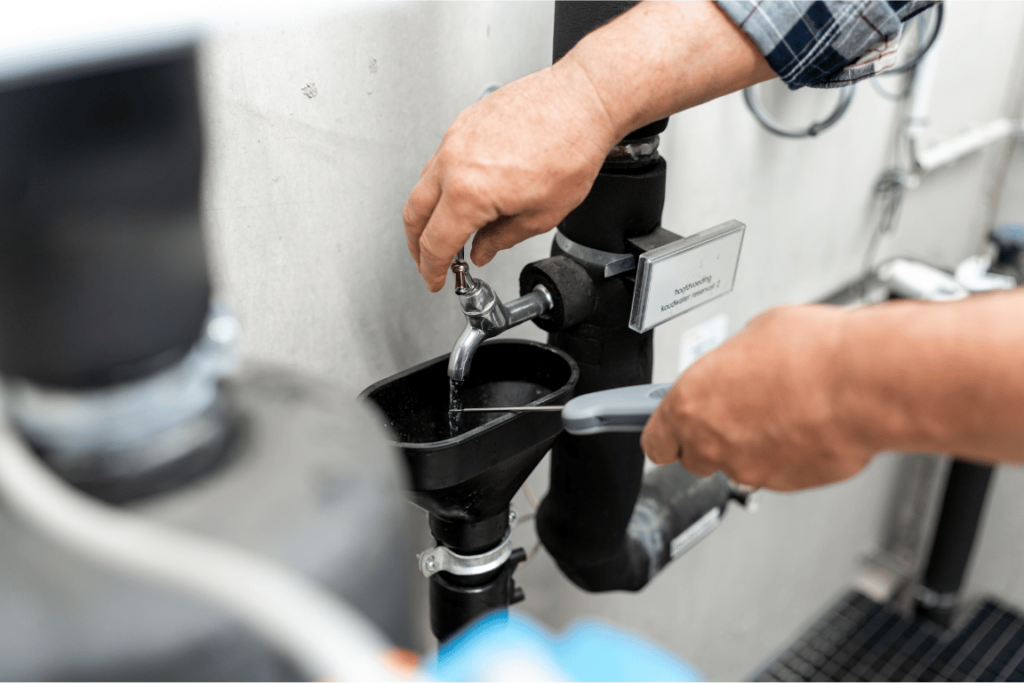
Keeping Records: Why It’s Non-Negotiable
It’s 2024, and if you’re not keeping digital records of your flushing regime, you’re behind. Record-keeping isn’t just about compliance—it’s about spotting trends before they become problems.
Record every flush—time, duration, and temperature achieved. This isn’t optional; it’s the bare minimum required for effective Legionella control.
Over time, your data should tell a story. Are certain outlets consistently struggling to meet temperature requirements? Is there a trend of higher temperatures during certain times of the year? Use this data to make informed adjustments to your regime.
Create a dashboard that can give you a real-time view of your system’s health. Don’t rely on paper logs or outdated spreadsheets. Use technology to automate record-keeping and highlight potential issues before they escalate.
Flushing for Legionella isn’t complicated, but it is critical. The key is to stop treating it as a routine task and start thinking of it as your last line of defense.
By following best practices, flushing regularly, and keeping detailed records, you’re not just staying compliant—you’re keeping people safe.
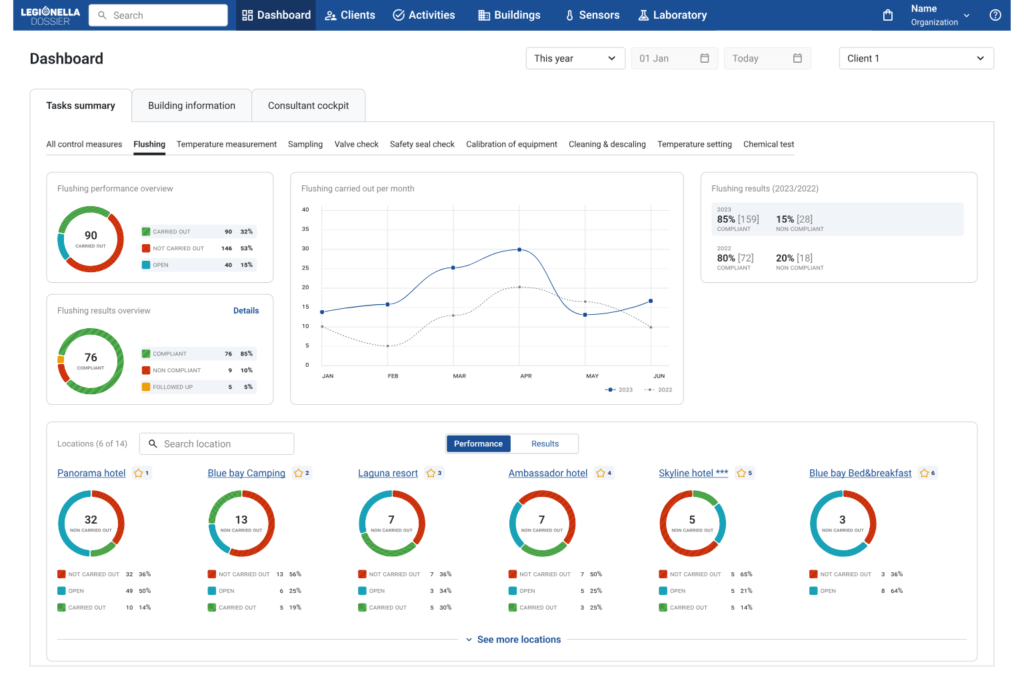
Interested?
Experience the benefits yourself!

